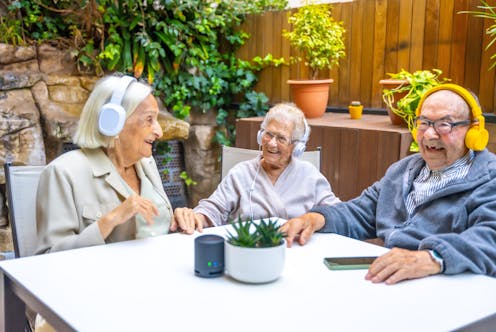Introduction: Understanding the Role of Creativity in Grief
Grief is a natural and necessary process that occurs when we experience a significant loss. It is important to acknowledge and process grief in order to heal and move forward. One powerful tool in the grief process is creativity. Engaging in creative activities can help individuals express and process their emotions, find meaning in their loss, and ultimately find healing.
Virtual Art Therapy: An Innovative Approach to Dealing with Loss
Virtual art therapy is a form of therapy that utilizes technology to provide art therapy sessions remotely. It differs from traditional art therapy in that it takes place online, allowing individuals to participate from the comfort of their own homes. This can be especially beneficial for those who are unable to attend in-person sessions due to physical limitations, geographical distance, or other factors.
The benefits of virtual art therapy for those dealing with grief are numerous. It provides a safe and supportive space for individuals to explore their emotions and express themselves creatively. It also offers increased accessibility and convenience, as individuals can participate in sessions from anywhere with an internet connection. Additionally, virtual art therapy can potentially increase engagement and creativity, as individuals may feel more comfortable and relaxed in their own environment.
The Science of Creativity: How Art Therapy Can Help with Grief
There is a strong connection between creativity and the brain. Engaging in creative activities, such as art therapy, can stimulate the release of dopamine, a neurotransmitter associated with pleasure and reward. This can help regulate emotions and provide a sense of relief and satisfaction. Art therapy can also activate the prefrontal cortex, which is responsible for emotional regulation and decision-making. By engaging in art therapy, individuals can process their grief and emotions in a safe and controlled manner.
The Benefits of Virtual Art Therapy for Grieving Individuals
One of the key benefits of virtual art therapy is increased accessibility and convenience. Many individuals may be unable to attend in-person therapy sessions due to physical limitations, transportation issues, or other factors. Virtual art therapy allows individuals to participate in therapy from the comfort of their own homes, eliminating these barriers. This can be especially beneficial for those who are grieving, as they may be experiencing heightened emotions and may not have the energy or ability to travel to a therapy session.
Another benefit of virtual art therapy is the ability to participate from the comfort of one’s own home. Grief can be an intensely personal and private experience, and some individuals may feel more comfortable expressing themselves in a familiar environment. Virtual art therapy allows individuals to create art and process their emotions in a space that feels safe and secure to them.
Additionally, virtual art therapy has the potential to increase engagement and creativity. Some individuals may feel more relaxed and at ease in their own environment, which can enhance their ability to express themselves creatively. This can lead to a deeper exploration of emotions and a more meaningful therapeutic experience.
Getting Started with Virtual Art Therapy: Tips and Techniques
If you are interested in trying virtual art therapy for grief, there are a few things you can do to get started. First, set up a comfortable and safe space for your virtual sessions. Find a quiet area where you can focus and feel at ease. Make sure you have a stable internet connection and a device that allows you to participate in video calls.
Next, choose the right art supplies and materials for your virtual art therapy sessions. Consider what type of art you enjoy and what materials you feel comfortable using. Some common art supplies for virtual art therapy include paper, paints, markers, colored pencils, and clay. Experiment with different materials and find what works best for you.
Once you have your space and materials set up, you can begin exploring different art therapy techniques. Some techniques you may find helpful include drawing or painting your emotions, creating a collage of images that represent your grief, or using clay to sculpt a representation of your loss. Remember that there are no right or wrong ways to create art in therapy. The goal is to express yourself and process your emotions in a way that feels meaningful to you.
Exploring Different Art Forms in Virtual Art Therapy
Virtual art therapy offers a wide range of possibilities when it comes to exploring different art forms. Some examples of art forms that can be used in virtual sessions include painting, drawing, collage, sculpture, and digital art. Each art form offers its own unique benefits and can be tailored to meet the needs and preferences of the individual.
Painting and drawing can be a powerful way to express emotions and explore grief. The act of applying paint to a canvas or pencil to paper can be cathartic and provide a sense of release. Collage allows individuals to create a visual representation of their grief by combining images and materials that resonate with them. Sculpture, whether using clay or other materials, can provide a tactile and hands-on experience that can be particularly helpful for individuals who prefer a more physical form of expression. Digital art offers a unique opportunity to explore creativity and express emotions using technology.
When choosing an art form for virtual art therapy, it is important to consider your own preferences and comfort level. Experiment with different art forms and see what resonates with you. Remember that the goal is not to create a masterpiece, but rather to use art as a tool for self-expression and healing.
The Role of the Art Therapist in Virtual Sessions
In virtual art therapy sessions, the role of the art therapist is crucial. A trained and licensed art therapist can guide and support individuals through the grief process, providing a safe and nonjudgmental space for exploration and healing. The art therapist can help individuals choose the right art materials and techniques, provide guidance and feedback on their artwork, and facilitate discussions about the emotions and themes that arise during the creative process.
The art therapist can also help individuals navigate any challenges or difficulties that may arise during virtual art therapy sessions. They can provide support and guidance in addressing technical issues, troubleshooting problems, and ensuring that the virtual session runs smoothly. Additionally, the art therapist can help individuals cope with difficult emotions that may arise during art therapy, providing tools and strategies for managing and processing these emotions.
Overcoming Challenges in Virtual Art Therapy for Grief
While virtual art therapy offers many benefits, there can also be challenges that arise. One common challenge is technical difficulties. It is important to have a stable internet connection and a device that is capable of running video calls. If technical issues do arise, it can be helpful to have a backup plan in place, such as a phone call or alternative form of communication.
Another challenge that individuals may face in virtual art therapy is feelings of isolation and disconnection. Participating in therapy remotely can sometimes feel less personal or intimate than in-person sessions. It is important to communicate any feelings of isolation or disconnection to the art therapist, who can provide support and guidance in navigating these emotions.
Finally, virtual art therapy may bring up difficult emotions that can be challenging to process. It is important to have coping strategies in place for managing these emotions, such as deep breathing exercises, grounding techniques, or reaching out to a support system. The art therapist can provide guidance and support in developing these coping strategies and can help individuals navigate the emotional challenges that may arise during art therapy.
Success Stories: Real-Life Examples of Virtual Art Therapy for Grief
There are many real-life examples of individuals who have found healing through virtual art therapy for grief. One individual, Sarah, found that virtual art therapy allowed her to express her grief in a way that felt safe and comfortable. She was able to create artwork that represented her emotions and process her grief in a supportive and nonjudgmental environment. Through virtual art therapy, Sarah was able to find healing and move forward in her grief journey.
Another individual, John, found that virtual art therapy provided him with a sense of connection and community. He was able to participate in group art therapy sessions online, where he could share his artwork and discuss his grief with others who were experiencing similar losses. This sense of community and support was instrumental in John’s healing process and allowed him to feel less alone in his grief.
These success stories highlight the power of virtual art therapy in the grief process. By providing a safe and supportive space for individuals to express themselves creatively, virtual art therapy can help individuals process their grief, find healing, and move forward in their lives.
Conclusion: The Enduring Power of Creativity in Healing from Loss
In conclusion, acknowledging and processing grief is an important part of the healing process. Creativity can play a powerful role in this process, allowing individuals to express and explore their emotions, find meaning in their loss, and ultimately find healing. Virtual art therapy is an innovative approach to dealing with grief that offers increased accessibility and convenience. It provides a safe and supportive space for individuals to engage in creative activities and process their emotions. By harnessing the power of creativity, virtual art therapy can be a powerful tool in the grief process.
Find out how Torongo Therapyplus can help you with your needs. Get in touch with us at smile@torongo.life, or call us on 02 8809 9965.































